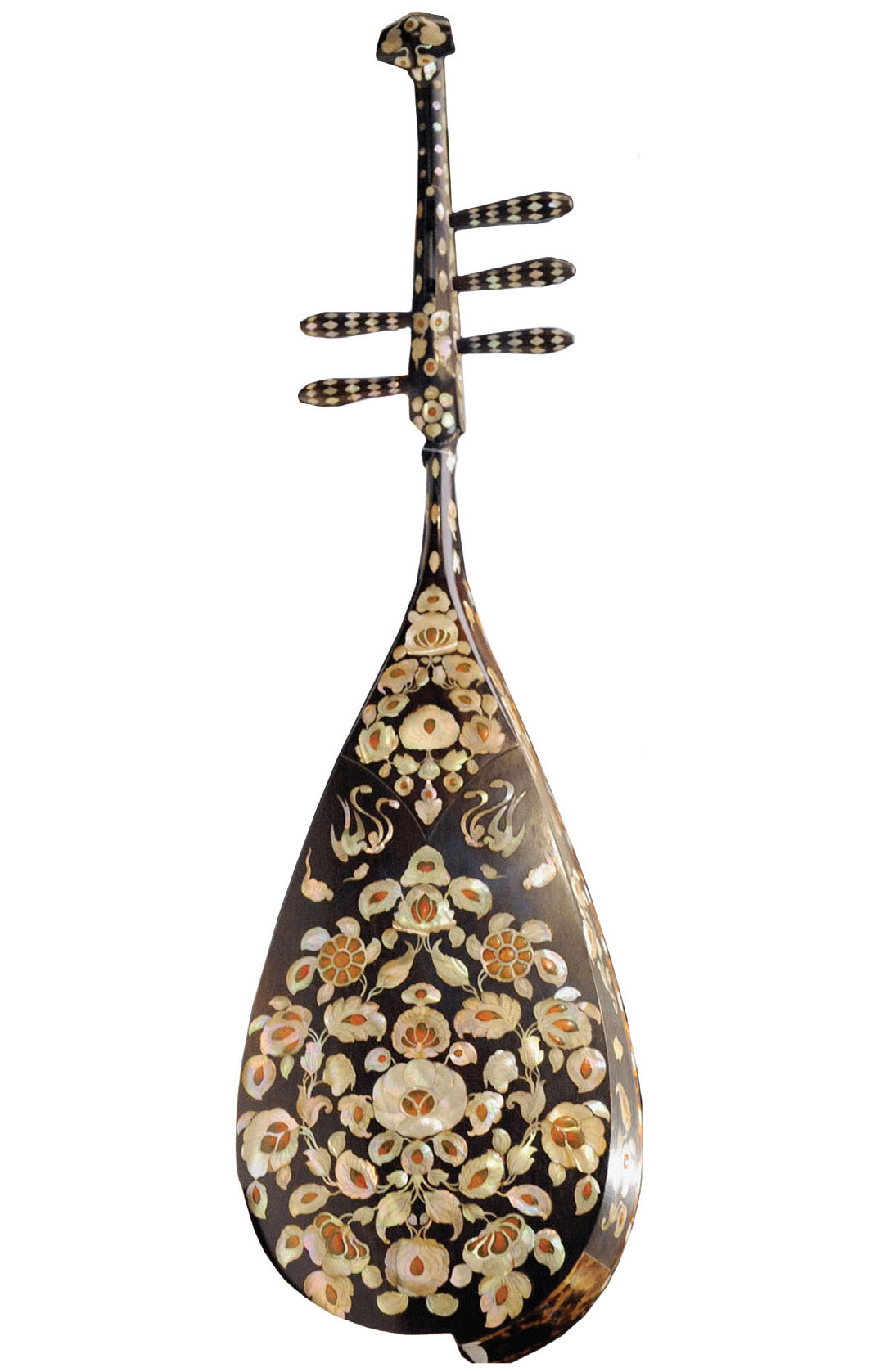Understanding World Societies:
Printed Page 193
> What elements of Chinese culture were adopted by Koreans, Vietnamese, and Japanese, and how did they adapt them to their own circumstances?

This musical instrument, decorated with fine wood marquetry, was probably presented by the Tang court to a Japanese envoy. It was among the objects placed in a Japanese royal storage house (Shōsōin) in 756. (Kyodo News International, Inc.)
DDuring the millennium from 200 B.C.E. to 800 C.E., China exerted a powerful influence on its immediate neighbors, who began forming states of their own. By Tang times China was surrounded by independent states in Korea, Manchuria, Tibet, the area that is now Yunnan province, Vietnam, and Japan. All of these states were much smaller than China in area and population, making China by far the dominant force politically and culturally. Nevertheless, each of these separate states developed a strong sense of its independent identity.
The earliest information about each of these countries is found in Chinese sources. Han armies brought Chinese culture to Korea and Vietnam, but even in those cases much cultural borrowing was entirely voluntary as the elite, merchants, and craftsmen adopted the techniques, ideas, and practices they found appealing. In Japan much of the process of absorbing elements of Chinese culture was mediated via Korea. In Korea, Japan, and Vietnam the fine arts — painting, architecture, and ceramics in particular — were all strongly influenced by Chinese models. Tibet was as much in the Indian sphere of influence as in the Chinese and thus followed a somewhat different trajectory. Most significantly, it never adopted Chinese characters as its written language, nor was it as influenced by Chinese artistic styles as were other areas. Moreover, the form of Buddhism that became dominant in Tibet came directly from India, not through Central Asia and China.
In each area Chinese-